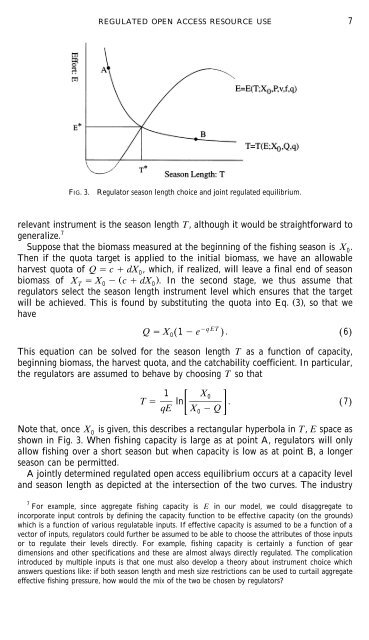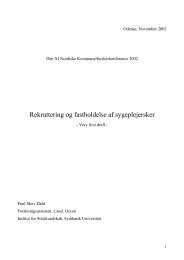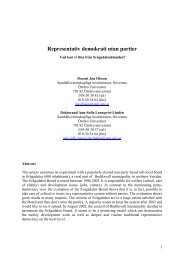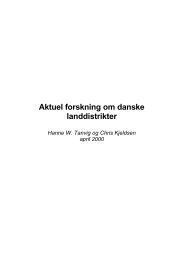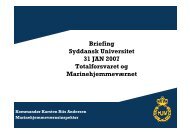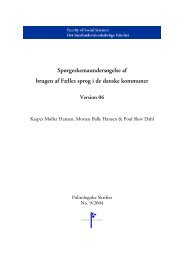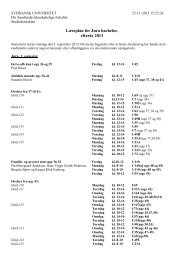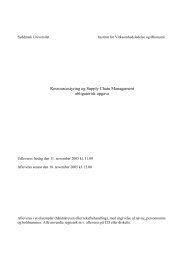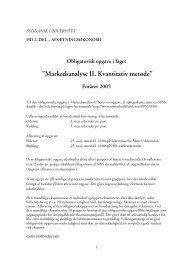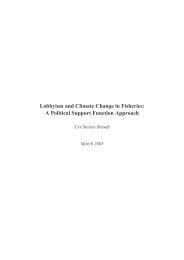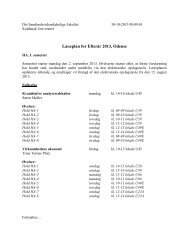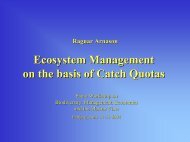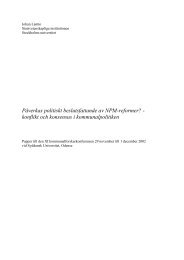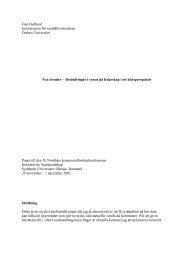A Model of Regulated Open Access Resource Use
A Model of Regulated Open Access Resource Use
A Model of Regulated Open Access Resource Use
You also want an ePaper? Increase the reach of your titles
YUMPU automatically turns print PDFs into web optimized ePapers that Google loves.
REGULATED OPEN ACCESS RESOURCE USE 7<br />
FIG. 3.<br />
Regulator season length choice and joint regulated equilibrium.<br />
relevant instrument is the season length T, although it would be straightforward to<br />
generalize. 7<br />
Suppose that the biomass measured at the beginning <strong>of</strong> the fishing season is X . 0<br />
Then if the quota target is applied to the initial biomass, we have an allowable<br />
harvest quota <strong>of</strong> Q c dX 0, which, if realized, will leave a final end <strong>of</strong> season<br />
biomass <strong>of</strong> X X Ž c dX .. In the second stage, we thus assume that<br />
T 0 0<br />
regulators select the season length instrument level which ensures that the target<br />
will be achieved. This is found by substituting the quota into Eq. Ž. 3 , so that we<br />
have<br />
Q X 1 e qET . 6<br />
0Ž . Ž .<br />
This equation can be solved for the season length T as a function <strong>of</strong> capacity,<br />
beginning biomass, the harvest quota, and the catchability coefficient. In particular,<br />
the regulators are assumed to behave by choosing T so that<br />
1 X 0<br />
T ln . Ž 7.<br />
qE X Q<br />
Note that, once X0<br />
is given, this describes a rectangular hyperbola in T, E space as<br />
shown in Fig. 3. When fishing capacity is large as at point A, regulators will only<br />
allow fishing over a short season but when capacity is low as at point B, a longer<br />
season can be permitted.<br />
A jointly determined regulated open access equilibrium occurs at a capacity level<br />
and season length as depicted at the intersection <strong>of</strong> the two curves. The industry<br />
7 For example, since aggregate fishing capacity is E in our model, we could disaggregate to<br />
incorporate input controls by defining the capacity function to be effective capacity Ž on the grounds.<br />
which is a function <strong>of</strong> various regulatable inputs. If effective capacity is assumed to be a function <strong>of</strong> a<br />
vector <strong>of</strong> inputs, regulators could further be assumed to be able to choose the attributes <strong>of</strong> those inputs<br />
or to regulate their levels directly. For example, fishing capacity is certainly a function <strong>of</strong> gear<br />
dimensions and other specifications and these are almost always directly regulated. The complication<br />
introduced by multiple inputs is that one must also develop a theory about instrument choice which<br />
answers questions like: if both season length and mesh size restrictions can be used to curtail aggregate<br />
effective fishing pressure, how would the mix <strong>of</strong> the two be chosen by regulators?<br />
0


